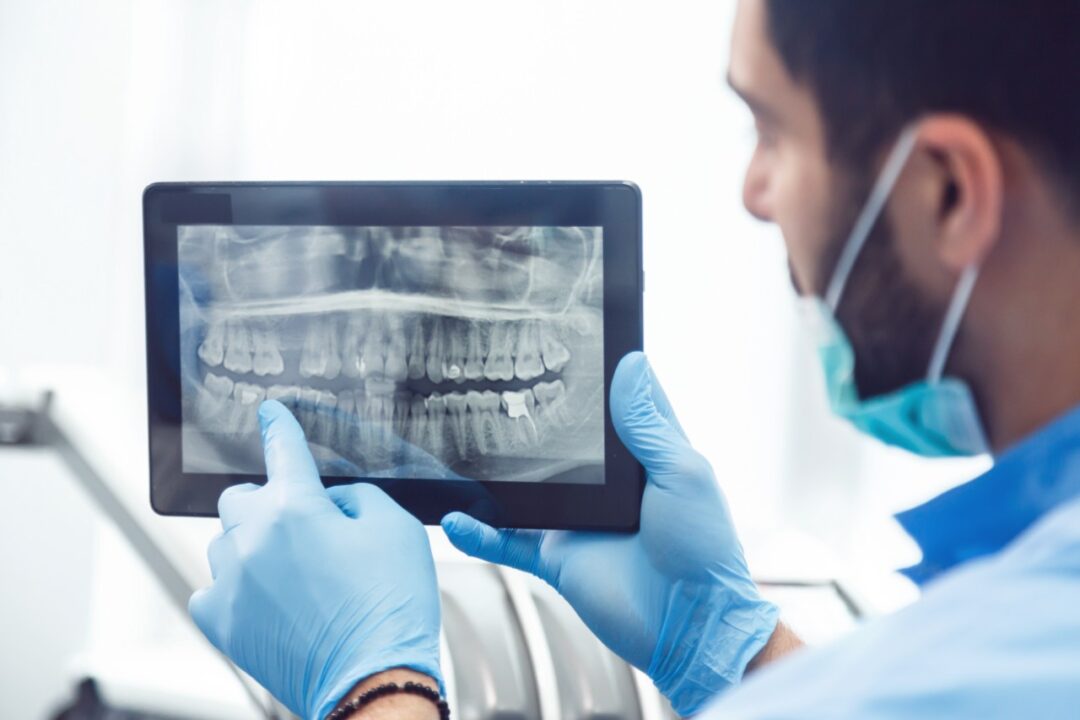Why do we need dental x-rays and how often should they be done? |

X-rays done during dental visits have seemingly become a routine part of the examination. But did you know that the American Dental Association (ADA) in conjunction with the U.S. Food and Drug Administration (FDA) has developed guidelines for when and why they should be performed?
Why perform x-rays of teeth? Dental x-rays can provide valuable information to help guide the dentist in providing the best care possible. Some of the advantages to the dentist as well as to patients include:
- Being able to detect areas of decay that are not visible on oral examination
- Identifying decay occurring beneath a filling
- Finding bone loss due to gum disease
- Revealing an abscess at the root of the tooth
- Allowing certain dental problems to be addressed at an early stage
Types of dental x-rays. The three most common types of dental x-rays are the bitewing, periapical and panoramic. Of these, the bitewing is the one most often performed. The bitewing is performed by having the patient bite down on a piece of plastic with x-ray film. These x-rays are designed to primarily view the molars and specifically look for decay between the teeth. A periapical x-ray provides an image of the entire tooth from crown to root. These are particularly useful when evaluating for a cyst or abscess. Panoramic x-rays provide a view of the upper and lower teeth in a single view. This type is particularly useful in evaluating children’s tooth development or for the emergence of wisdom teeth.
Key recommendations from the ADA/FDA regarding dental x-rays in adults:
- For new patients, an “individualized radiographic exam consisting of posterior bitewings with panoramic exam or posterior bitewings and selected periapical images”, is considered to be appropriate.
- In a new patient with evidence of dental disease or a history of extensive dental treatment, a “full mouth intraoral radiographic exam is preferred.”
- For patients returning for dental evaluation, who have evidence of dental decay or who are at increased risk of developing cavities, a posterior bitewing exam at 6-18 month intervals” is recommended.
- In return patients with no evidence of dental decay and no increased risk of developing cavities, “posterior bitewing x-rays at 24-36 month intervals” are advised.
Factors related to an increased risk of developing dental disease. Everyone is at risk of developing tooth decay, but a number of factors increase the likelihood of developing dental caries (cavities) including:
- Poor dental hygiene
- Foods that stick to teeth for a long time such as milk or sweets.
- Inadequate fluoride intake which is typically not present in bottled water.
- Worn fillings or dental devices.
- Dry mouth due to certain medical conditions, radiation to the head or neck, and taking medications that inhibit saliva production.
- Younger or older individuals who are more prone to developing cavities
It should be noted that these are recommendations only, with the final decision on when and why to perform x-rays left up to the dentist’s clinical judgement. These guidelines vary somewhat in children, adolescents or in adults who do not have teeth. The ADA/FDA guidelines also state that the dentist should have dental x-rays performed only after reviewing the patient’s health history and completing a clinical examination.
Additionally, measures should be taken to minimize radiation exposure by limiting the number of images produced, using “fast” speed film, and providing patients with radiation-blocking aprons and collars when appropriate.
Sources for article:
The Selection of Patients for Dental Radiographic Examinations from the FDA and ADA
American Dental Association Oral Health Topics—X-rays
Reviewed on April 13, 2016 by our Medical Director
If you have any more questions just Ask Hanna, our health advisors are here to help.
Image: ©Shutterstock / Deflector Image








